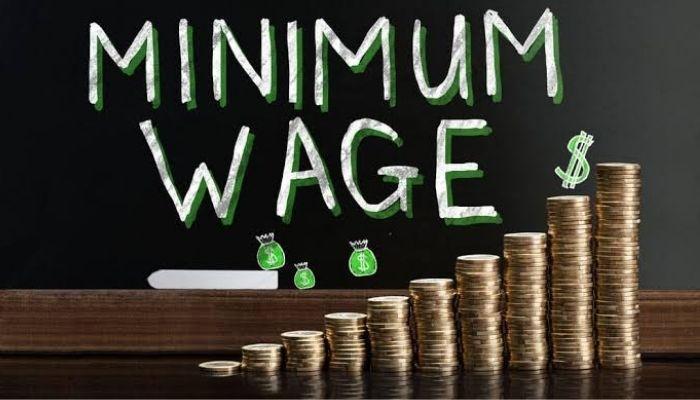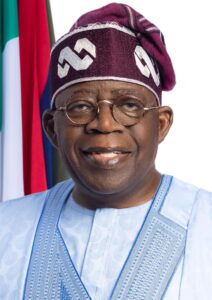
States and minimum wage: A call for reason
By Bajowa Oni
It is hard to argue that, considering current economic realities, an update of the minimum wage is not necessary.When the current administration came into office a year ago, inflation was at 22 percent. It now stands at 33 percent, with food inflation higher than 40 percent. Nigerians bear the brunt of these increases daily at markets across the country, and many families have had to cut their expenditure to fit the times.
The need to reflect the cost of living in the new minimum wage is at the heart of the tussle between organised labour, led by the NLC and TUC on one hand, and the government and private sector on the other hand.
Labour’s starting position was N615,000 per month, but has now moderated to around N200,000 per month after several rounds of negotiations. The federal government, for its part, has proposed N60,000, a position which the NLC has rejected as a starvation wage, leaving both parties wide apart.
The government also insisted on its position because it was offering a series of non-monetary incentives, including:
1) N35,000 wage award for all treasury-paid Federal workers.
2) N100 billion naira for the procurement of CNG-fuelled buses and CNG conversion kits.
3) N125 billion naira conditional grant and financial inclusion to MSMEs.
4) N25,000 each to be shared to 15 million households for 3 months.
5) N185 billion palliatives (loans to States) to cushion the effects of fuel subsidy removal.
6) N200 billion naira to support the cultivation of hectares of land to boost food production.
7) N75 billion naira to strengthen the manufacturing sector.
8) N1 trillion naira for student loans for higher education.
9) Release of 42,000 metric tons of grains from strategic reserves.
10) Purchase and onward distribution of 60,000 metric tons of Rice from the rice millers association.
11) Recent salary increase of 25-35 percent on all consolidated Salary structures for federal workers.
However, apart from the reality of Nigeria’s inflation, there is also the issue of the ability of states to pay the minimum wage. Nigeria’s states are in a slightly different position from the federal government and the private sector. The Federal Government can print more money to do what labour wants, with all the damage that will do to the economy. The private sector companies who will be affected by the minimum wage increase can do a range of things as well: they can raise prices, sachetise their offerings, layoff staff, or failing all else, simply close shop as many firms have already done. For states, it is different.
They cannot print money and there are limits to the debt they can take on. As a result, they will have to rely on a loan of some sort from the government to meet their wage obligations. There is already precedent for this.
Not all fingers are equal.
The last time the minimum wage was increased was in 2019, when it was raised to N30,000. It is worth noting that as recently as May 2022, three years after adoption, seven states were yet to implement the minimum wage. Part of this is because states do not generate enough revenue internally to be able to implement the minimum wage, as well as the adjustments across all cadres that often results. Most states still depend on the monthly federal allocations to function.
In fact, only three states — Lagos, Ogun and Akwa Ibom — generate more in internal revenue than they receive in federal allocations, according to BudgIT, a fiscal transparency organisation.
The case has been made previously that states should be able to determine their own minimum wage based on their respective financial positions, which vary significantly.
According to BudgIT’s 2023 State of States report, Lagos generates N43,386 in IGR per capita, more than double the figure of Rivers State in second place with N21,422. As far as that measure is concerned, Rivers is closer to Zamfara (N1,191) in last place than it is to Lagos.
These wide disparities mean that any minimum wage discussion that does not consider the ability of all the 36 states to pay, will only result in a pyrrhic victory that benefits far fewer workers than first thought.
Earlier this June, a source who was privy to the discussions of the Nigerian Governors Forum about the minimum wage revealed that only ten states can afford the proposed minimum wage of N62,000.
The states are: Lagos, Edo, Delta, Akwa Ibom, Bayelsa, Cross River, Rivers, Ogun, Kano, and Kaduna. The source also added that compelling the states to pay such a wage could lead to layoffs across the affected states. It will be no surprise to realise that the states who can afford the proposed minimum wage are the ones with the most revenues overall. It will be recalled that Edo State is already paying N70,000 minimum wage to workers in the state, which commenced in April. This is an example of a state government looking at its finances and arriving at a proactive solution to address the cost-of-living crisis. However, the new minimum wage is not for only one state or ten states. It is for the whole country.
The focus therefore, should be a sustainable minimum wage that all states can pay. Failure to do this will lead to the FG giving budget support to states who cannot afford the new wage.
When that budget support runs out, default will become the norm and workers in many states will go back to square one.
So much for so few
Another reason why the minimum wage adjustment is so contentious is not just because of the wage itself, but because of the consequential adjustment that results. The new wage applies to civil servants on Grade levels 1 to 6, but Grades 7 to 17 also get an adjustment as well, leading to a significant effect on the personnel costs of the states. At the last increment, civil servants from Grades 7-17 got increases ranging from 10-23 percent.
Under a scenario of a N70,000 minimum wage, the wage bill of states is expected to increase by 70 percent on average, a huge jump. In a N150,000 scenario which will be more appealing to Labour, that wage bill will go up three and a half times or 250 percent. On top of this, remittances from the NNPC have dried up because petrol subsidy is back. This means that the states have less funds to satisfy the minimum wage demands. The current petrol subsidy is around N500 per litre ex-depot, one of the biggest differentials in the subsidy scheme’s history. Sustaining it comes with costs at every level.
Already, a relatively small percentage of people get a significant portion of the state’s revenues as salaries and pensions, leaving little for things like infrastructure, education and healthcare. An increase in the minimum wage will ensure that a fraction of the population gets an even larger chunk of revenues at state and federal levels.
Recurrent expenditure – of which wages are a central component – is already sky-high. As of 2022, recurrent expenditure as a percentage of total revenue averages 89 percent for the 36 states, leaving little for important capital expenditure that is necessary to drive governance outcomes. A new minimum wage with the current fiscal reality will only worsen this picture. It will mean that states exist to pay salaries and pensions, with little fiscal space for anything else.
While it is certainly true that organised labour has the responsibility to cater to their members, which total only about two million people, their push for higher wages can easily see them become part of the problem rather than the solution, if those wages are unaffordable and also take resources away from other areas that need urgent attention.
In trying to fix one problem, it is important not to do things that will make other problems worse.




